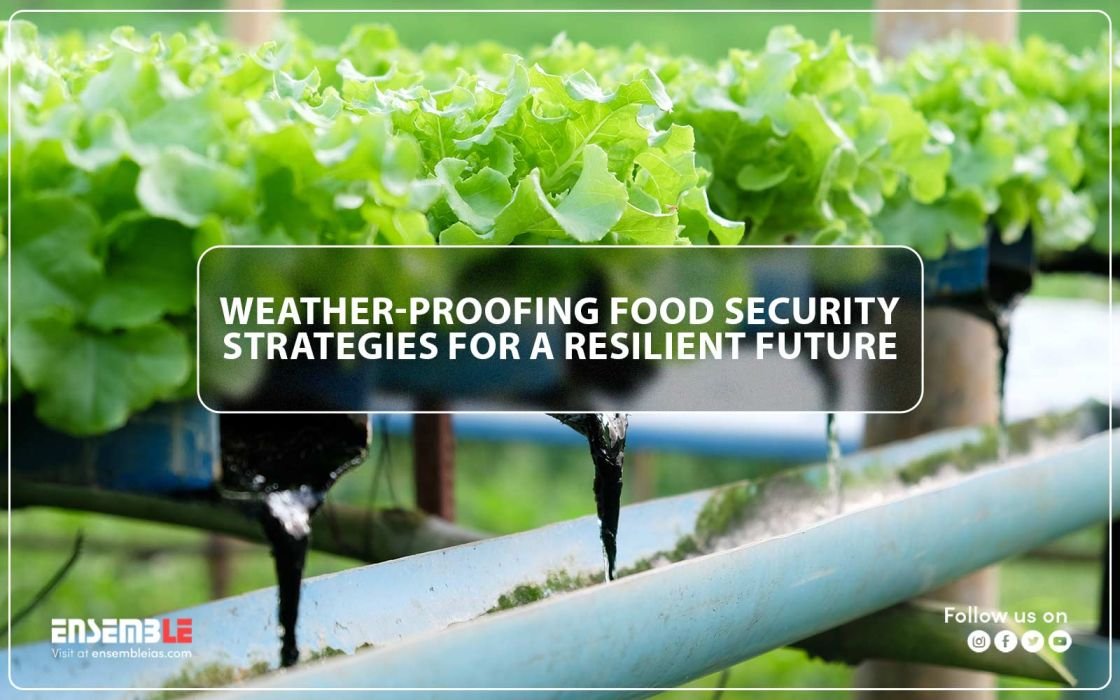Ensuring food security is a crucial aspect of a nation’s development. India, with its vast population, faces unique challenges in this regard. The volatility of food prices, vulnerability to external shocks, and the looming threat of climate change necessitate a proactive approach to weather-proof food security. With the challenges posed by external factors such as droughts, supply chain disruptions, and global conflicts, it is crucial to adopt proactive measures to mitigate the impact on food prices and availability. This is why the significance of weather-proofing food security presents practical strategies to ensure a stable and affordable food supply for the citizens of India.
Understanding the Current Scenario:
The Consumer Price Index (CPI) inflation for April 2023 has shown a positive trend, with a decline to 4.7 percent and food price inflation reaching a lower 3.84 percent. Collaboration between the Reserve Bank of India (RBI) and the Government of India (GoI) is essential to sustain this progress. The objective is to manage inflation while promoting high economic growth.
What is Weather-Proof Food Security?
Weather-proof food security refers to the resilience of a nation’s food supply in the face of climatic uncertainties and external shocks. It involves ensuring that food prices remain stable and affordable while maintaining an adequate supply for all segments of society.
The government can effectively weatherproof the nation’s food security by adopting comprehensive measures to address cereal and milk inflation. The collective efforts of policymakers, agricultural experts, and the general population are crucial in achieving sustainable nutrition and stable food prices.
Understanding the Impact of External Shocks:
Food price inflation in India is often triggered by external shocks such as droughts and supply chain disruptions. These shocks can have a significant impact on the overall inflation rate. To mitigate the effects of these shocks, a comprehensive approach involving monetary and fiscal policies is required.
Anticipating Monsoon Variability:
The looming danger of a brewing El Nino and the uncertainty surrounding monsoon rainfall highlight the need for preparedness. By adopting a “hope for the best, prepare for the worst” mindset; policymakers can develop contingency plans to counter potential droughts or below-normal rainfall. Timely information from the Indian Meteorological Department (IMD) plays a crucial role in devising effective strategies.
Buffer Stocking Policy for Cereal Inflation:
Rice and wheat, as essential staples, hold significant weightage in the Consumer Price Index (CPI) basket. Buffer stocking policies can play a pivotal role in managing cereal inflation. The government can conduct open market operations to stabilize prices by leveraging the excess and surplus buffer stocks. For instance, unloading 5 million tonnes (MT) of rice from the Central Pool can help regulate rice inflation and ensure affordable prices.
Addressing Milk Inflation:
Milk and milk products contribute significantly to CPI inflation due to their high weightage. Inflation in this category is driven by disease outbreaks impacting milk production and high fodder prices. To combat milk inflation, policymakers can consider reducing import duties on fat and skimmed milk powder (SMP). Lower import duties would encourage imports, thereby stabilizing milk prices.
Preemptive Import Policy:
Another effective measure is to regulate import duties on key commodities such as fat and skimmed milk powder. By reducing import duties, the government can encourage imports, thereby increasing the supply and curbing inflation. This approach proves especially useful in addressing milk and milk product price hikes caused by factors like disease outbreaks and fodder price inflation.
Challenges and Considerations:
● The Impending El Niño:
The looming El Niño potentially threatens monsoon rainfall and agricultural productivity. To prepare for a possible scenario of below-normal rainfall; t is essential to plan and implement strategies to mitigate its impact on food security. By adopting a cautious approach, the government can minimize the effects of a potential drought on agricultural yields and prices.
● Lag Time for Policy Results:
It is crucial to acknowledge that the effects of policy actions on food prices may take time to materialize. As demonstrated by previous experiences, there is a lag of two to three months before these interventions show significant results. Therefore, policymakers should anticipate challenges and implement preemptive measures to address any potential crisis effectively.
Weather-proofing food security is an ongoing challenge that requires a multi-faceted approach. India can strengthen its food security system by focusing on cereal and milk inflation, implementing buffer stocking policies, and adopting proactive import regulations. Timely policy actions and a comprehensive understanding of market dynamics are vital for keeping inflation rates around 4 per cent. As the nation continues to evolve, it is essential to prioritize long-term strategies that promote resilience and sustainability in the agricultural sector. Through collaborative efforts between the Reserve Bank of India (RBI) and the Government of India (GoI), India can weather-proof its food security, ensuring a prosperous and well-nourished future for its citizens.




